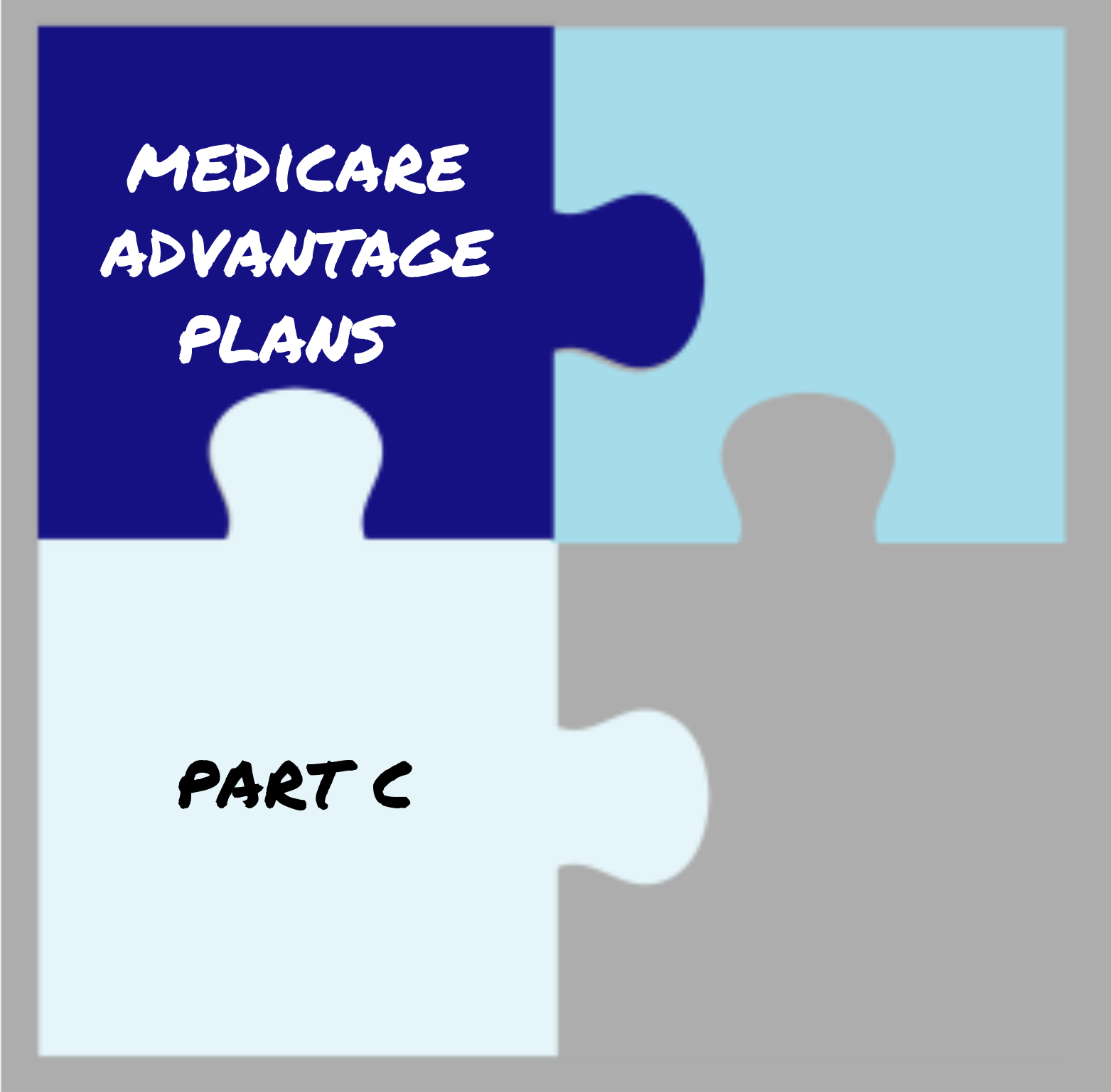High-Deductible Maternity Insurance Navigating the Benefits and Drawbacks
Explore the benefits and drawbacks of high-deductible maternity insurance. Learn how this option can impact your healthcare costs and what to consider before choosing a plan.
When it comes to maternity insurance coverage, expectant mothers face numerous decisions about how to best manage their health and finances during pregnancy. One option that some families consider is high-deductible maternity insurance. This type of plan comes with its own set of benefits and drawbacks, and understanding these can help you make a more informed decision. This blog post explores the advantages and disadvantages of high-deductible maternity plans, compares them with traditional options, and provides tips for managing costs effectively.
What is High-Deductible Maternity Insurance?
High-deductible maternity insurance is a type of health insurance plan with a higher deductible compared to traditional maternity insurance plans. The deductible is the amount you must pay out-of-pocket before the insurance begins to cover costs. For maternity care, this means that you will need to cover a significant portion of your prenatal and delivery expenses before your insurance kicks in.
Benefits of High-Deductible Maternity Insurance
-
Lower Monthly Premiums
- High-deductible maternity insurance plans generally have lower monthly premiums compared to traditional comprehensive maternity insurance. This can make them a more affordable option on a month-to-month basis, especially for families who are self-employed or freelancing in cities like Louisville or Grand Rapids.
-
Health Savings Account (HSA) Eligibility
- Many high-deductible plans qualify for Health Savings Accounts (HSAs). Contributions to an HSA are tax-deductible, and withdrawals for medical expenses are tax-free. This can provide a significant tax benefit and help cover out-of-pocket expenses, such as those associated with prenatal insurance policies or maternity insurance for twins.
-
Potential for Lower Overall Costs
- If you are generally healthy and do not anticipate needing extensive maternity care, a high-deductible plan could end up being more cost-effective. This is particularly true if you are able to cover your deductible and avoid additional costs.
Drawbacks of High-Deductible Maternity Insurance
-
Higher Out-of-Pocket Costs
- The primary drawback of a high-deductible plan is the higher initial costs. You will need to pay more out-of-pocket before your insurance covers expenses. For maternity insurance for high-risk pregnancies or maternity insurance for cesarean sections, this can mean significant expenses upfront.
-
Potential for Large Medical Bills
- If complications arise or if you require specialized care, the costs can quickly add up. Maternity insurance for freelancers or family maternity insurance plans may not always cover all the expenses, leading to potentially large medical bills.
-
Risk of Inadequate Coverage
- High-deductible plans might not cover all maternity-related services comprehensively. It's important to carefully review what is covered under the plan to avoid unexpected expenses, particularly if you are considering private maternity insurance or international maternity insurance.
Comparing High-Deductible Maternity Insurance to Traditional Plans
When comparing high-deductible maternity insurance to traditional plans, there are several key factors to consider
Premiums and Deductibles
- Traditional Plans These plans typically offer lower deductibles but higher premiums. They might be better suited for those who expect to have significant maternity expenses.
- High-Deductible Plans Offer lower premiums but come with higher deductibles. They are ideal for those who can manage higher out-of-pocket costs and want lower monthly payments.
Coverage
- Traditional Plans Often provide more comprehensive coverage, including lower co-pays and coinsurance for maternity care, which can be beneficial for those needing extensive prenatal care.
- High-Deductible Plans May have more limited coverage until the deductible is met, which can be a disadvantage if unexpected complications arise.
Cost Management
- Traditional Plans May offer more predictable costs due to lower deductibles and co-pays.
- High-Deductible Plans Require careful budgeting and saving to cover the higher deductible, but can be manageable with an HSA.
Tips for Managing Costs with High-Deductible Maternity Insurance
-
Save Early and Often
- Start setting aside money for your deductible as soon as possible. An HSA can be a great tool for this, providing both tax benefits and a dedicated fund for healthcare expenses.
-
Utilize Preventive Care
- Take advantage of preventive services that may be covered before you meet your deductible. This includes routine prenatal check-ups and screenings that are crucial for a healthy pregnancy.
-
Review Your Plan’s Network
- Ensure that your chosen healthcare providers are in-network to avoid additional costs. Maternity insurance comparison can help you select a plan with a good network of providers.
-
Understand Your Coverage
- Read the fine print of your policy to know exactly what is covered and what is not. This will help you avoid unexpected expenses and make better decisions regarding affordable maternity insurance.
-
Plan for Unexpected Costs
- Consider creating a separate emergency fund for unexpected medical expenses that might arise during pregnancy or delivery.
-
Explore Financial Assistance Programs
- Look into any available financial assistance programs that might help cover costs associated with maternity insurance for adoption, short-term maternity insurance, or maternity insurance for unmarried mothers.
High-deductible maternity insurance offers a potential cost-saving option for expectant mothers, particularly those who are healthy and can manage higher out-of-pocket expenses. By understanding the benefits and drawbacks, comparing it with traditional plans, and effectively managing costs, you can make an informed decision that best fits your financial and healthcare needs.
Comparing High-Deductible Maternity Insurance vs. Other Types of Maternity Coverage
When preparing for the arrival of a new baby, selecting the right maternity insurance coverage is crucial. The type of coverage you choose will impact your premiums, deductibles, out-of-pocket costs, and coverage limits. This article explores the differences between high-deductible maternity insurance and other types of maternity coverage, offering recommendations for various types of expectant mothers in cities like Louisville, Grand Rapids, Oklahoma City, Lansing, and Des Moines.
Understanding Maternity Insurance
Maternity health insurance is designed to cover the costs associated with pregnancy, childbirth, and postpartum care. The goal is to alleviate some of the financial burdens that come with bringing a new child into the world. Depending on your situation, different plans may be more suitable.
Types of Maternity Insurance Coverage
High-Deductible Maternity Insurance
High-deductible maternity insurance plans generally feature lower monthly premiums but require higher deductibles. This means you will pay more out-of-pocket before your insurance coverage kicks in. Here's a breakdown
- Premiums Typically lower compared to other plans.
- Deductibles Higher, which means you'll need to cover a significant amount of your medical expenses before the insurance pays.
- Out-of-Pocket Costs Generally higher due to the high deductible.
- Coverage Limits May have specific limits on coverage or require you to pay more for certain services.
High-deductible maternity insurance might be a good option for those who are healthy and do not expect significant medical expenses. It is also an option for self-employed individuals or freelancers looking for more affordable monthly premiums.
Comprehensive Maternity Insurance
Comprehensive maternity insurance plans offer a broader range of coverage with lower deductibles compared to high-deductible plans
- Premiums Higher monthly premiums.
- Deductibles Lower, which means lower out-of-pocket expenses before coverage starts.
- Out-of-Pocket Costs Generally lower due to lower deductibles.
- Coverage Limits Typically more generous, covering a wide range of maternity-related services including prenatal visits, labor, delivery, and postpartum care.
These plans are suitable for those who want extensive coverage and are willing to pay higher monthly premiums for lower out-of-pocket costs.
Affordable Maternity Insurance
Affordable maternity insurance seeks to balance cost and coverage. It may offer moderate premiums and deductibles
- Premiums Moderate, providing a balance between cost and coverage.
- Deductibles Moderate, helping to keep out-of-pocket expenses manageable.
- Out-of-Pocket Costs Balanced to provide reasonable costs for expectant mothers.
- Coverage Limits Often provides good coverage with reasonable limits on specific services.
This type of insurance is ideal for expectant mothers who want a reasonable balance between monthly costs and coverage.
Comparing Coverage Options
Premiums and Deductibles
When comparing high-deductible maternity insurance to other plans, the key factors to consider are the premiums and deductibles. High-deductible plans often have lower premiums but higher deductibles, which can be challenging if unexpected expenses arise. Conversely, comprehensive plans offer higher premiums but lower deductibles, potentially saving money in the long run if significant maternity care is needed.
Out-of-Pocket Costs
The total out-of-pocket costs will depend on your deductible and the coverage provided. High-deductible plans require more out-of-pocket spending before insurance coverage begins, whereas comprehensive plans reduce out-of-pocket expenses due to lower deductibles.
Coverage Limits
Coverage limits can significantly impact your total costs. High-deductible plans may have specific limits or additional costs for certain services, while comprehensive plans often provide broader coverage.
Recommendations for Expectant Mothers
For Those with High-Risk Pregnancies
Expectant mothers with high-risk pregnancies should consider plans with more extensive coverage to handle potential complications. Comprehensive maternity insurance or private maternity insurance might be more appropriate to ensure access to specialized care and lower out-of-pocket costs.
For Self-Employed and Freelancers
High-deductible maternity insurance may be suitable for self-employed individuals or freelancers who need lower monthly premiums. However, it’s important to ensure that the plan provides adequate coverage for necessary maternity services.
For Families and Multiple Births
Families expecting multiple children, such as twins, or those interested in family maternity insurance plans, should look into plans with generous coverage limits. Maternity insurance for twins or comprehensive family plans can help manage the costs associated with multiple births.
For Low Premiums
If managing monthly expenses is a priority, affordable maternity insurance or maternity insurance with low premiums may be the best fit. These plans can offer a balance between cost and coverage, making them suitable for many families.
Choosing the right maternity insurance involves evaluating your specific needs and financial situation. High-deductible maternity insurance offers lower monthly premiums but higher out-of-pocket costs, while comprehensive plans provide broader coverage with higher premiums. Understanding these differences can help you select the best maternity health insurance for your circumstances.
How to Choose the Best High-Deductible Maternity Insurance Plan A Step-by-Step Guide
Choosing the right high-deductible maternity insurance plan can be a daunting task, especially when considering the various needs and potential expenses associated with pregnancy. This guide will walk you through the steps to assess your individual needs, compare plans, and understand policy details to ensure you find the best coverage for pregnancy-related expenses.
Step 1 Assess Your Individual Needs
Before diving into maternity insurance comparison, start by evaluating your specific needs and circumstances
1.1 Evaluate Your Financial Situation
- High-deductible maternity insurance plans typically come with lower monthly premiums but higher out-of-pocket costs. Determine how much you can afford to pay out-of-pocket for your maternity health insurance and whether you can manage a high deductible.
1.2 Consider Your Health and Pregnancy Plans
- If you have a high-risk pregnancy or expect complications, you might need a plan with more extensive coverage. Consider if you are pregnant with twins or anticipate a cesarean section, as these could impact the type of coverage you need.
1.3 Look at Coverage Needs
- Make a list of what is important for you, such as prenatal insurance policies, maternity insurance benefits, and maternity insurance without waiting period. This will help you narrow down options that fit your needs.
Step 2 Compare Plans
Once you have a clear understanding of your needs, start comparing different maternity insurance options
2.1 Research Plan Types
- Affordable maternity insurance plans can vary widely. Look for plans that offer comprehensive coverage, such as private maternity insurance and family maternity insurance plans. Consider employer-sponsored maternity insurance if you’re covered through your job or group maternity insurance plans if you're part of a larger group.
2.2 Use Online Tools
- Utilize online tools to get online maternity insurance quotes. These tools allow you to quickly compare different policies based on premiums, deductibles, and coverage options.
2.3 Check Coverage Details
- Ensure the plan covers essential services like prenatal visits, labor and delivery, and postnatal care. Verify if the plan includes coverage for maternity insurance for self-employed individuals or freelancers if applicable.
Step 3 Understand Policy Details
Understanding the specifics of each plan is crucial in making an informed decision
3.1 Review Deductibles and Premiums
- High-deductible maternity insurance plans have higher deductibles, so ensure you can manage these costs. Compare how the deductibles impact your overall out-of-pocket expenses and balance them with your monthly premiums.
3.2 Look at Network Providers
- Check if the plan includes a broad network of maternity insurance providers and whether your preferred doctors and hospitals are covered. This is especially important for international maternity insurance if you are traveling or living abroad.
3.3 Examine Coverage for Special Needs
- If you have specific needs like maternity insurance for high-risk pregnancies or coverage for adoption, ensure these are included in the plan. Also, review any restrictions or limitations related to short-term maternity insurance and maternity insurance renewal terms.
3.4 Understand the Enrollment Period
- Make sure you are aware of the maternity insurance enrollment period to avoid missing out on your preferred plan. Enrollment deadlines can affect your ability to get coverage for the specific period you need.
Step 4 Consider Additional Factors
Other factors might influence your decision
4.1 Assess Tax Benefits
- Explore potential maternity insurance tax benefits that could help offset the cost of premiums or out-of-pocket expenses.
4.2 Evaluate Customer Service and Support
- Research customer reviews and ratings to gauge the quality of customer service and support provided by the insurer. This can be particularly important if you anticipate needing frequent assistance or support.
4.3 Look into Renewal Terms
- Understand the maternity insurance renewal terms to ensure that your coverage remains in place throughout your pregnancy and beyond.
Choosing the best high-deductible maternity insurance plan involves a careful assessment of your needs, diligent comparison of available plans, and a thorough understanding of policy details. By following these steps, you can find the most suitable plan to cover your pregnancy insurance options and ensure you have the protection you need for a healthy and secure pregnancy.
An In-Depth Cost Analysis of High-Deductible Maternity Insurance
Navigating the complexities of maternity insurance coverage can be daunting, especially when faced with high-deductible plans. This article delves into the typical costs associated with high-deductible maternity insurance, comparing them with traditional insurance plans. We’ll also offer strategies for budgeting and managing out-of-pocket expenses to ensure you make an informed choice.
Understanding High-Deductible Maternity Insurance
What Is High-Deductible Maternity Insurance?
High-deductible maternity insurance refers to plans with a higher deductible, meaning you pay more out-of-pocket before your insurance coverage kicks in. These plans typically offer lower monthly premiums but higher deductibles compared to traditional maternity insurance plans.
Typical Costs of High-Deductible Maternity Insurance
Premiums
Monthly premiums for high-deductible maternity insurance are generally lower than those for traditional plans. For instance, if you live in Louisville or Grand Rapids, you might find premiums ranging from $150 to $300 per month for a plan that covers maternity expenses. In Oklahoma City, Lansing, and Des Moines, premiums may vary slightly but generally follow a similar range.
Deductibles
The deductible is the amount you must pay out-of-pocket before your insurance starts covering costs. High-deductible plans often have deductibles ranging from $3,000 to $7,000 or more. This means that if you’re planning to expand your family, you could be responsible for significant out-of-pocket expenses before the insurance begins to cover prenatal care, delivery, and postnatal care.
Out-of-Pocket Maximum
Many high-deductible plans include an out-of-pocket maximum, which caps the total amount you will spend in a year. This cap can range from $6,000 to $13,000. Once you reach this limit, the insurance plan will cover 100% of your medical expenses.
Comparing High-Deductible Plans to Traditional Plans
Traditional Maternity Insurance
Traditional maternity insurance plans generally have lower deductibles but higher premiums. They may also cover a broader range of services without requiring you to meet a significant deductible first. For example, in Des Moines, a traditional maternity insurance plan might cost between $300 and $500 per month with a deductible of $1,000 to $2,500.
Cost Comparison
- Premiums High-deductible plans often have lower premiums, but the trade-off is higher deductibles. Traditional plans have higher premiums but lower deductibles.
- Deductibles High-deductible plans require you to pay more out-of-pocket before coverage kicks in. Traditional plans usually have lower deductibles.
- Coverage Traditional plans may offer more comprehensive coverage from the start, whereas high-deductible plans might require you to pay for more services upfront.
Strategies for Budgeting and Managing Out-of-Pocket Expenses
1. Estimate Total Costs
Begin by estimating the total cost of maternity care, including prenatal visits, delivery, and postnatal care. Factor in your deductible and any co-pays or coinsurance. For instance, if you have a deductible of $5,000, you should budget this amount in addition to your monthly premiums.
2. Utilize Health Savings Accounts (HSAs)
If your high-deductible plan qualifies, consider using a Health Savings Account (HSA). Contributions to an HSA are tax-deductible, and withdrawals for qualified medical expenses are tax-free. This can be an effective way to save for your deductible and other out-of-pocket expenses.
3. Compare Online Quotes
Use online tools to compare different maternity insurance options and find the best plan for your needs. Look for affordable maternity insurance plans that offer the best balance between premiums and deductibles. Comparing quotes can help you find plans that fit your budget and coverage requirements.
4. Explore Employer-Sponsored and Group Plans
Check if your employer offers employer-sponsored maternity insurance. Group plans may have lower premiums and more comprehensive coverage compared to individual plans. In cities like Louisville and Grand Rapids, employer-sponsored plans might provide better benefits and lower out-of-pocket costs.
5. Consider Short-Term Maternity Insurance
If you're in between jobs or waiting for your employer's benefits to kick in, short-term maternity insurance could be a temporary solution. While it may not cover everything, it can help manage costs until you secure more comprehensive coverage.
6. Look Into Maternity Insurance Tax Benefits
Certain tax benefits may apply to maternity insurance costs. For example, you may be able to deduct qualified medical expenses from your taxes. Check with a tax advisor to understand how these benefits can help offset your expenses.
7. Plan for High-Risk Pregnancies
If you have a high-risk pregnancy, you may need additional coverage. Look for maternity insurance for high-risk pregnancies to ensure you receive the necessary care without excessive out-of-pocket expenses.
8. Review Maternity Insurance Benefits
Thoroughly review the benefits of your chosen plan. Ensure it covers essential services such as prenatal care, delivery, and postnatal care. Some plans may also offer additional benefits like maternity insurance for twins or maternity insurance for cesarean sections.
Choosing the right maternity insurance plan requires careful consideration of costs, coverage, and personal needs. High-deductible plans can offer lower premiums but may involve higher out-of-pocket expenses. By comparing maternity insurance quotes, exploring different plan options, and budgeting effectively, you can manage your costs and ensure you receive the coverage you need.
If you live in Louisville, Grand Rapids, Oklahoma City, Lansing, or Des Moines, make sure to review local options and consult with insurance professionals to find the best maternity health insurance plan for your situation. Whether you choose a high-deductible plan or a traditional one, planning ahead and understanding your coverage will help you navigate this important time with greater ease and confidence.
Comprehensive FAQ on High-Deductible Maternity Insurance
Navigating the world of maternity insurance coverage can be complex, especially when dealing with high-deductible plans. Here’s a comprehensive FAQ to help you understand how these plans work, what to consider before enrolling, and their impact on out-of-pocket expenses during pregnancy and childbirth.
What is High-Deductible Maternity Insurance?
High-deductible maternity insurance refers to health insurance plans with higher deductibles, meaning you must pay a significant amount out-of-pocket before the insurance coverage kicks in. These plans typically offer lower monthly premiums but require you to cover a larger portion of your healthcare costs until the deductible is met.
How Does a High-Deductible Maternity Insurance Plan Work?
-
Premiums vs. Deductibles High-deductible plans have lower monthly premiums but higher deductibles. For example, if you have a plan with a $5,000 deductible, you will need to pay the first $5,000 of medical expenses out-of-pocket before the insurance starts covering additional costs.
-
Coverage After Deductible Once you meet the deductible, the insurance will usually cover a percentage of your medical costs, known as coinsurance, until you reach the out-of-pocket maximum.
-
Preventive Care Many plans cover certain preventive services, such as prenatal check-ups, without requiring you to meet the deductible first.
What Should I Consider Before Enrolling in a High-Deductible Maternity Insurance Plan?
-
Out-of-Pocket Costs Assess your ability to pay the deductible and other out-of-pocket costs, such as copayments and coinsurance. High-deductible plans are best suited for those who can manage these expenses or have a Health Savings Account (HSA) to cover them.
-
Maternity Health Insurance Needs Consider your specific maternity health insurance needs, including potential complications or high-risk factors. High-deductible plans might be less favorable if you anticipate extensive prenatal care or a cesarean section.
-
Plan Benefits Compare the benefits of different high-deductible maternity insurance plans. Look at coverage for prenatal care, delivery, and postnatal care. Ensure the plan aligns with your anticipated needs.
-
Affordable Maternity Insurance Determine if the lower premiums of a high-deductible plan offset the potential higher costs of out-of-pocket expenses. Sometimes a plan with a higher premium and lower deductible might be more cost-effective in the long run.
-
Coverage for Specific Needs If you have specific needs, such as maternity insurance for twins or maternity insurance for high-risk pregnancies, ensure the plan provides adequate coverage.
How Will High-Deductible Maternity Insurance Impact My Out-of-Pocket Expenses?
-
Initial Costs You'll be responsible for covering the full amount of medical expenses until you meet the deductible. This includes costs for prenatal visits, diagnostic tests, and delivery.
-
Coinsurance After meeting the deductible, you'll typically pay a percentage of the costs until you reach the out-of-pocket maximum. This coinsurance can add up, so consider how it fits into your budget.
-
Maximum Out-of-Pocket High-deductible plans usually have an out-of-pocket maximum. Once you reach this limit, the insurance will cover 100% of additional covered expenses for the remainder of the plan year.
What Are the Benefits of High-Deductible Maternity Insurance?
-
Lower Premiums One of the main benefits is lower monthly premiums, which can make it more affordable if you’re healthy and don’t anticipate high medical expenses.
-
HSA Eligibility Many high-deductible plans are HSA-eligible, allowing you to save money tax-free for medical expenses. This can help manage out-of-pocket costs.
-
Potential Savings If you’re in good health and can manage high deductibles, these plans may offer overall savings compared to plans with higher premiums.
What Are the Drawbacks of High-Deductible Maternity Insurance?
-
High Upfront Costs The need to pay a significant amount out-of-pocket before coverage begins can be a financial burden, especially for high-cost maternity care.
-
Risk of Unexpected Expenses Unexpected complications or extended hospital stays can lead to high out-of-pocket costs, even after meeting the deductible.
-
Limited Coverage for Certain Needs Some high-deductible plans may have limitations on coverage for specific maternity health insurance needs or high-risk pregnancies.
What Are Some Alternatives to High-Deductible Maternity Insurance?
-
Low-Deductible Plans If you anticipate high costs or prefer to minimize out-of-pocket expenses, consider plans with lower deductibles and higher premiums.
-
Employer-Sponsored Maternity Insurance Check if your employer offers employer-sponsored maternity insurance with better coverage options or lower deductibles.
-
Short-Term Maternity Insurance For those who need temporary coverage, short-term maternity insurance plans might be an option, though they may offer limited benefits.
-
International Maternity Insurance If traveling abroad, international maternity insurance might provide better coverage for your needs.
How Can I Find the Best High-Deductible Maternity Insurance Plan?
-
Compare Plans Use online tools to compare maternity insurance plans based on premiums, deductibles, coverage, and benefits. Look for plans that offer the best balance between premium costs and coverage.
-
Read Reviews Research maternity insurance reviews and ratings to gauge the experiences of other policyholders.
-
Consult an Insurance Agent Speak with an agent specializing in maternity insurance to get personalized recommendations based on your needs.
What Are the Enrollment Periods for Maternity Insurance?
-
Open Enrollment Most health insurance plans have an annual enrollment period during which you can sign up or change your plan.
-
Special Enrollment Periods Certain life events, such as pregnancy, may qualify you for a special enrollment period outside the regular open enrollment.
-
Employer Enrollment If your insurance is provided through your employer, check their specific enrollment period and options for adding maternity coverage.
What Are the Tax Benefits of Maternity Insurance?
-
HSA Contributions Contributions to an HSA used for maternity health insurance expenses are tax-deductible.
-
Tax Deductions Certain maternity insurance benefits and out-of-pocket expenses may be deductible on your tax return, depending on your overall medical expenses and tax situation.
How Can I Get Online Maternity Insurance Quotes?
-
Insurance Comparison Websites Use online tools to obtain online maternity insurance quotes and compare plans based on your needs.
-
Direct Insurer Quotes Request quotes directly from insurance companies to get personalized options.
What's Your Reaction?



















